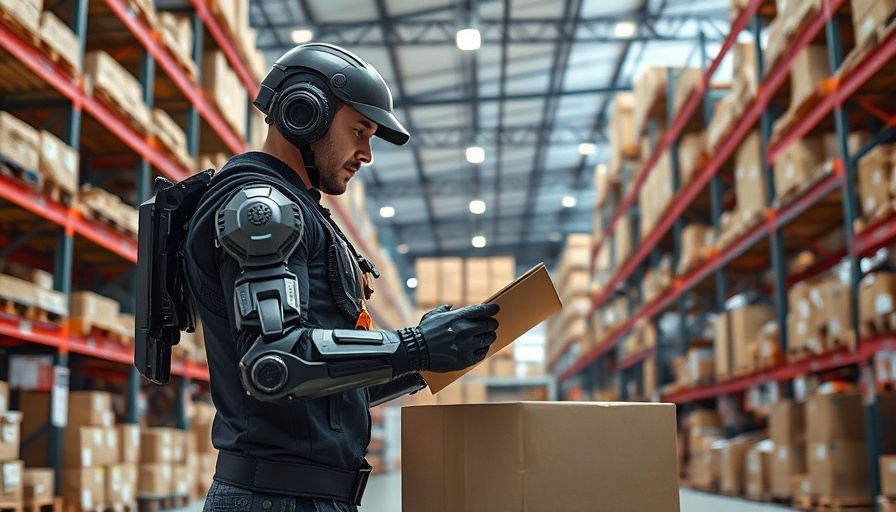
The Future of Work: AI-Powered Exoskeletons
German Bionic has taken a remarkable leap into the future of labor with the unveiling of Exia, a groundbreaking exoskeleton that not only aids in heavy lifting but also incorporates an AI brain designed to enhance human capabilities. As physical demands in various industries rise, especially in sectors like logistics and healthcare, innovations such as Exia hold the potential to fundamentally reshape the landscape of work.
What Makes Exia Different?
Exia is unlike any other exoskeleton on the market, offering up to 38kg of assistance, making a substantial difference for workers lifting heavy loads. The secret isn’t just in the mechanical design, but in its augmented AI system—which learns and adapts based on the individual user’s movements. This "muscle memory" for machines means that over time, the exoskeleton can predict and respond to the physical needs of its wearer, potentially reducing the risk of injuries and improving overall productivity.
AI Augmentation: The new paradigm
This augmented AI represents a shift away from traditional automation. Instead of merely taking over tasks, it focuses on enhancing human performance, making the worker's abilities the central focus. As businesses in fast-paced industries look to optimize their operations, understanding how these technologies can support their workforce becomes essential.
The Financial Implications for Companies
Investing in AI-enhanced technologies like Exia may seem costly, but the potential return on investment (ROI) can be significant. With decreased worker injuries, lower healthcare costs, and increased labor efficiency, companies can expect smoother operations. In sectors where manual labor is unavoidable, these innovations could also be critical in addressing workforce shortages.
Broader Impacts and Ethical Considerations
The rise of such technologies is not without challenges. As businesses integrate AI to augment human capabilities, ethical considerations come into play. How do we protect workers’ rights? What happens to jobs when machines becoming increasingly capable? These are discussions that executives must engage in proactively as they navigate digital transformation.
Conclusion: Embracing Transformation
As the advent of AI-powered exoskeletons like Exia signifies, the workplace is undergoing a transformation that blends human intelligence with machine efficiency. For those leading organizations through these changes, embracing such innovations is not just an option; it’s a necessity for sustainably driving progress and ensuring employee welfare. Companies must start considering how they can implement these technologies to not only enhance productivity but also to foster a safer work environment.
 Add Row
Add Row  Add
Add 




Write A Comment